Weathering, Corrosion, Staining, Substrate, Solder, Sealants
One of the most important issues concerning the use of copper is the chemical reaction between copper and other materials. Chemical reactions are responsible for corrosion, staining, and even the green patina that develops on copper surfaces over time.
Weathering and Patination:
The oxidation process that gives copper its characteristic green patina is a result of exposure to an acidic atmosphere. The process is, therefore, faster in some metropolitan, marine, and industrial areas, where higher concentrations of pollutants exist. When acidic moisture comes in contact with exposed copper surfaces, it reacts with the copper to form copper sulfate. The acid is neutralized during the reaction with the copper. This patina eventually covers the surface and adheres tightly to it, thus providing a protective layer against further weathering.
Natural Weathering Color Chart - Typical for Moist Industrial Climates, Timespan Varies
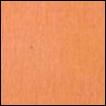 Unexposed |
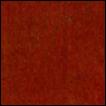 4 Months |
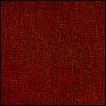 8 Months |
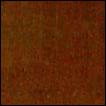 1 Year |
|---|---|---|---|
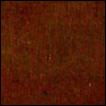 2 Years |
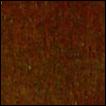 3 Years |
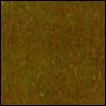 4 Years |
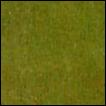 5 Years |
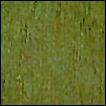 7 Years |
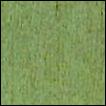 10 Years |
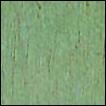 15 Years |
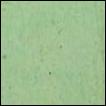 25-30 Years |
Corrosion:
All metals have a property called nobility. It is a measure of a metal's resistance to corrosion when in contact with another metal. A greater relative difference in nobility between the two metals in contact indicates a greater corrosion potential. Table 1.3A ranks the most common metals used in construction in increasing nobility, called the galvanic number.
|
When dissimilar metals are in contact with one another in the presence of an electrolyte, galvanic action occurs, resulting in the deterioration of the metal with the lower galvanic number. The electrolyte may be rain water running from one surface to another, or moisture from the air containing enough acid to cause it to act as an electrolyte.
Since copper has one of the highest galvanic numbers or nobility of the active metals, it will not be harmed by contact with any of them. It will, however, cause corrosion of the other metals if in direct contact. The solution is to prevent such direct contact with the use of separating materials, such as specific paints or gaskets.
It is not necessary to isolate copper from lead, tin or stainless steel under most circumstances. The principal metals of concern in terms of direct contact are aluminum and zinc. Iron and steel are generally not a problem unless their mass is similar or smaller than that of the copper.
If paints or coatings are used for isolation, they must be compatible with both metals. Bituminous or zinc chromate primers can be used between copper and aluminum. Either of these or a red lead primer can be effective in separating copper from iron and other ferrous metals.
Taping or gasketing with nonabsorptive materials or sealants are effective methods of separating copper from all other metals. In areas with severe exposure, lead or similar gasketing materials should be used, except between copper and aluminum.
Regardless of the method used to separate the metals, wash from copper surfaces should be prevented from draining onto exposed aluminum. Traces of copper salts in the wash may accelerate corrosion of the aluminum.
Another type of corrosion, which affects copper, is caused by the flow of acidic water concentrated on a small area of copper. This type, often called "erosion corrosion", occurs when rain falls on a non-copper roof such as tile, slate, wood, or asphalt. The acidic water is not neutralized as it flows over the inert material. When water, collected over a large surface, is diverted or collected by a relatively small copper flashing or gutter, the copper may deteriorate before it develops a protective patina. Another type of corrosion occurs at the drip edge of inert roofing material conducting water into a copper gutter or valley. If shingles rest directly on the copper, the corrosive effect is amplified because moisture is held along the edge by capillary action resulting in "line-corrosion". The solution is to raise the lower edge of the shingles with a cant strip, or to provide a replaceable reinforcing strip between the shingles and the copper.
Staining:
The wash of water over copper surfaces can have additional impact. Moisture in contact with copper surfaces tends to pick up small quantities of copper salts. When this moisture contacts porous material, such as marble or limestone, it is absorbed. As the moisture evaporates, it leaves behind the copper salts as a stain on these materials. The green stain is particularly visible on light colored surfaces.
The condition does not occur with heavy rains or similar rapid run-off, since the dwell time of the moisture on the copper is short and little copper salt is picked up. Staining results from the slow bleeding action of copper laden moisture.
There are a number of ways to reduce staining or its visual impact. Two common methods are: collecting run-off in gutters and directing it away from the building via downspouts; and designing drip edges to a minimum of one inch, helping reduce the amount of copper laden moisture that comes into contact with material below. Coating the adjacent surface of the porous material with a clear silicone sealant can reduce staining by minimizing the amount of moisture absorbed into the surface.
Substrate Selection:
The preparation of the substrate onto which copper will be applied depends in part on the substrate selected and the copper application. A number of considerations, however, must always be taken into account.
In selecting the substrate, a key consideration is the method of attachment of the copper. All applications that rely on nails or screws to attach the copper or cleats to the underlying structure require a nailable deck, nailing strips within the deck, or wood blocking at specific locations. Such applications include standing seam roofs, batten seam roofs, flat seam roofs, continuous edge strips and cleats, and flashings around roof penetrations.
Regardless of the attachment method used, the structural integrity of the substrate should not be compromised. It must be able hold the roof under sustained design wind conditions, as well as to conform to all other required codes and standards.
The most common substrate for copper is wood, usually 1/2" to 3/4" plywood. Lumber should be kiln-dried and laid with all joints true and even to provide a smooth surface. It is recommended that wood be allowed to weather for a few days after installation. During this period it should be protected from rain, allowing it to conform to atmospheric temperature and moisture level, while settling into place.
There have been many recent developments in fire retardant treated (FRT) plywood and lumber. Most of these products use wood or plywood that is pressure-impregnated with chemical salts in water solution to inhibit combustion. Many of these salts are corrosive to copper, as well as other metals and materials. If leaching of theses salts brings them into contact with the copper, corrosion will occur. This is particularly likely in areas with high humidity, if condensation occurs, or if water is introduced during construction or at a later time. Any areas where salt laden moisture can collect then evaporate, thereby increasing the concentrations of salts, will accelerate the corrosion process. For a complete and updated report on Fire Rated Plywood and Corrosion, contact CDA.
Other materials used as substrates for copper include: concrete, brick, masonry units, terra cotta, and stucco. The guidelines discussed above apply to these materials as well. Smooth, dry surfaces, compatibility with copper, and provision for fasteners are all required for an acceptable substrate.
Substrate Preparation:
Sheet and strip copper applications in construction are inevitably required to provide some level of resistance to water penetration. Anything that can cause punctures or openings in the copper membrane should be avoided. Copper roofs, valley flashings, and gutter linings should always be applied on a smooth, dry, stable surface with no projecting nail heads or other imperfections. Movement in the substrate should be accommodated by properly designed expansion joints.
In such applications, an approved underlayment, usually saturated felt, must be applied to the substrate. The felt acts as a cushion for the copper sheets. A sheet of rosin-sized building paper should be inserted between the copper and the underlayment. This will prevent bonding between the two surfaces that would otherwise restrict the thermal movement of the copper. The only exceptions to this requirement are applications where the copper is not intended to move, not even under thermal stress. For example, continuous cleats and edge strips are nailed down, usually in a staggered pattern of nails 3 inches on center, to limit movement.
Solder and Sealants:
Copper construction methods have traditionally relied on solder to ensure water-tightness and to strengthen joints and seams. The solder used is common 50-50 tin-lead bar solder for uncoated copper. Alternative tin based solders are available for those who prefer a lead free installation. Solder is typically applied to mechanically fastened or formed, rigid joints. Soldered seams and joints are permanent; they should last the life of the copper. Continuous, long runs of soldered seams should be avoided to limit stress fractures.
In the weathering process, the solder turns from a shiny to a dull tone. Exposed solder in the finished joints can be minimized with the use of blind soldering. In this technique, solder is applied to the back or concealed edge of copper surfaces.
An alternative to solder, where its additional strength is not required, is the use of sealants. Sealant filled joints have been used successfully for standing seam and batten seam roofing applications where roof slopes are less than three inches per foot. Sealants can also be used in joints that are primarily designed to accommodate thermal movement of the copper.
The sealants used should be tested by the manufacturer and designated as compatible for use with copper. Many elastomeric polyurethane, silicone, butyl, polysulfide or other inorganic or rubber based sealants have shown acceptable performance. Acrylic, neoprene, and nitrile based sealants have been observed to actively corrode copper. The use of such sealants is, therefore, not recommended.
